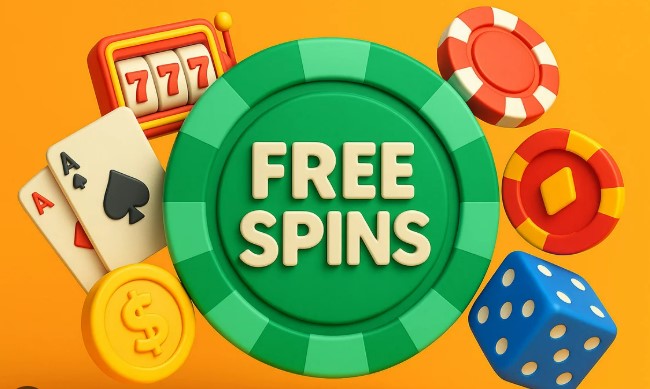Slot machines are more than just games of chance; they are meticulously designed to captivate and engage players, keeping them spinning the reels for hours on end. Behind their flashing lights, colorful graphics, and enticing sounds lies a deep understanding of human psychology and behavior. This article explores the psychology behind slot machine design, uncovering the strategies and techniques employed by game developers to keep players coming back for more.
The Appeal of Slot Machines: Instant Gratification and Excitement
One of the key psychological principles driving player behavior in slot machines is the concept of variable rewards. Slot machines are programmed to deliver unpredictable rewards at random intervals, creating a sense of anticipation and excitement with each spin. This variability keeps players engaged and motivated to continue playing in the hopes of landing a big win. The thrill of not knowing what the next spin will bring is a powerful motivator that hooks players and keeps them spinning the reels.
Near Misses
Slot machines often feature near misses, where the reels stop just short of a winning combination. These near misses create the illusion of almost winning, tricking players into thinking that they were close to hitting the jackpot. Psychologically, near misses activate the same reward pathways in the brain as actual wins, leading players to perceive them as near-win experiences. This sense of almost winning can be highly motivating, encouraging players to keep playing in the hopes of achieving a real win.
The Role of Visual and Audio Stimuli
Attention-Grabbing Visuals
Slot machines are designed to be visually appealing and attention-grabbing, with bright colors, flashing lights, and captivating animations. These visual stimuli are carefully crafted to draw players in and create a sense of excitement and immersion. Eye-catching symbols, intricate graphics, and dynamic displays contribute to the overall sensory experience of playing a slot machine, enticing players to keep spinning the reels.
Engaging Sound Effects
In addition to visual stimuli, slot machines also rely on audio cues to enhance the gaming experience. The sounds of spinning reels, ringing bells, and celebratory jingles create a multisensory environment that immerses players in the slot game. Sound effects are strategically used to signal wins, trigger bonus features, and reinforce positive feedback, reinforcing the excitement and anticipation of playing a slot machine.
Cognitive Biases and Heuristics
Availability Heuristic
The availability heuristic is a cognitive bias that leads people to overestimate the likelihood of events that are easily recalled from memory. In the context of slot machines, players may perceive their chances of winning as higher than they actually are, especially if they have recently experienced a win or seen others win. This bias can lead players to underestimate the risks and losses associated with gambling, contributing to continued play.
Gambler’s Fallacy
The gambler’s fallacy is another cognitive bias that influences player behavior in slot machines. This fallacy occurs when players believe that past outcomes influence future outcomes, leading them to make irrational decisions based on perceived patterns or streaks. For example, a player may continue to bet on a particular machine because they believe it is “due” for a win, despite the outcomes of previous spins being independent and random. The gambler’s fallacy can lead to risky gambling behavior and excessive losses.
Personalization and Player Engagement
Slot machines are increasingly incorporating personalized features and customization options to enhance player engagement. From adjustable bet levels and coin denominations to bonus rounds tailored to individual preferences, these personalized features cater to the unique needs and preferences of players. By allowing players to customize their gaming experience, slot machines create a sense of ownership and investment that encourages continued play.
Social Interaction
Many modern slot machines offer social features that allow players to interact with friends, compete in tournaments, and share their achievements on social media. These social elements foster a sense of community and camaraderie among players, creating opportunities for social interaction and connection. Social engagement not only enhances the gaming experience but also encourages players to return to the casino and play with their friends.
Responsible Gaming Measures
Self-Regulation Tools
In recognition of the potential risks associated with gambling, slot machines often include self-regulation tools and responsible gaming features. These tools allow players to set limits on their spending, time spent playing, and losses incurred. By empowering players to take control of their gambling behavior, slot machines promote responsible gaming practices and help mitigate the negative consequences of excessive gambling.
Conclusion
The psychology behind slot machine design is a fascinating and multifaceted subject that combines principles from behavioral psychology, neuroscience, and marketing. By understanding the underlying psychological mechanisms driving player behavior, game developers can create slot machines that are engaging, immersive, and rewarding. From variable rewards and attention-grabbing visuals to personalized features and responsible gaming measures, slot machines are carefully designed to capture players’ attention and keep them spinning the reels. As the online gambling industry continues to evolve, a deeper understanding of the psychology behind slot machine design will play a crucial role in creating enjoyable and responsible gaming experiences for players around the world.





